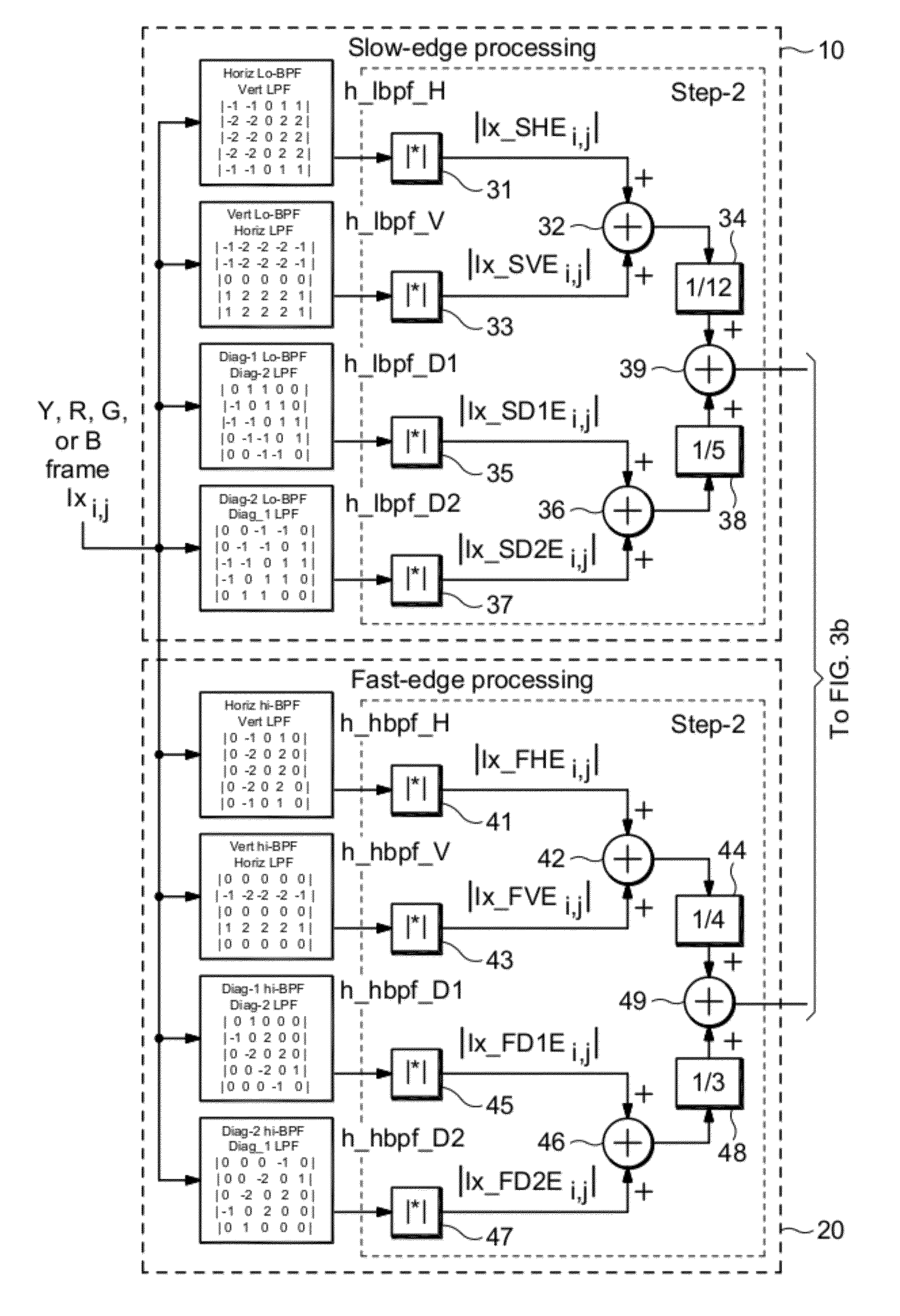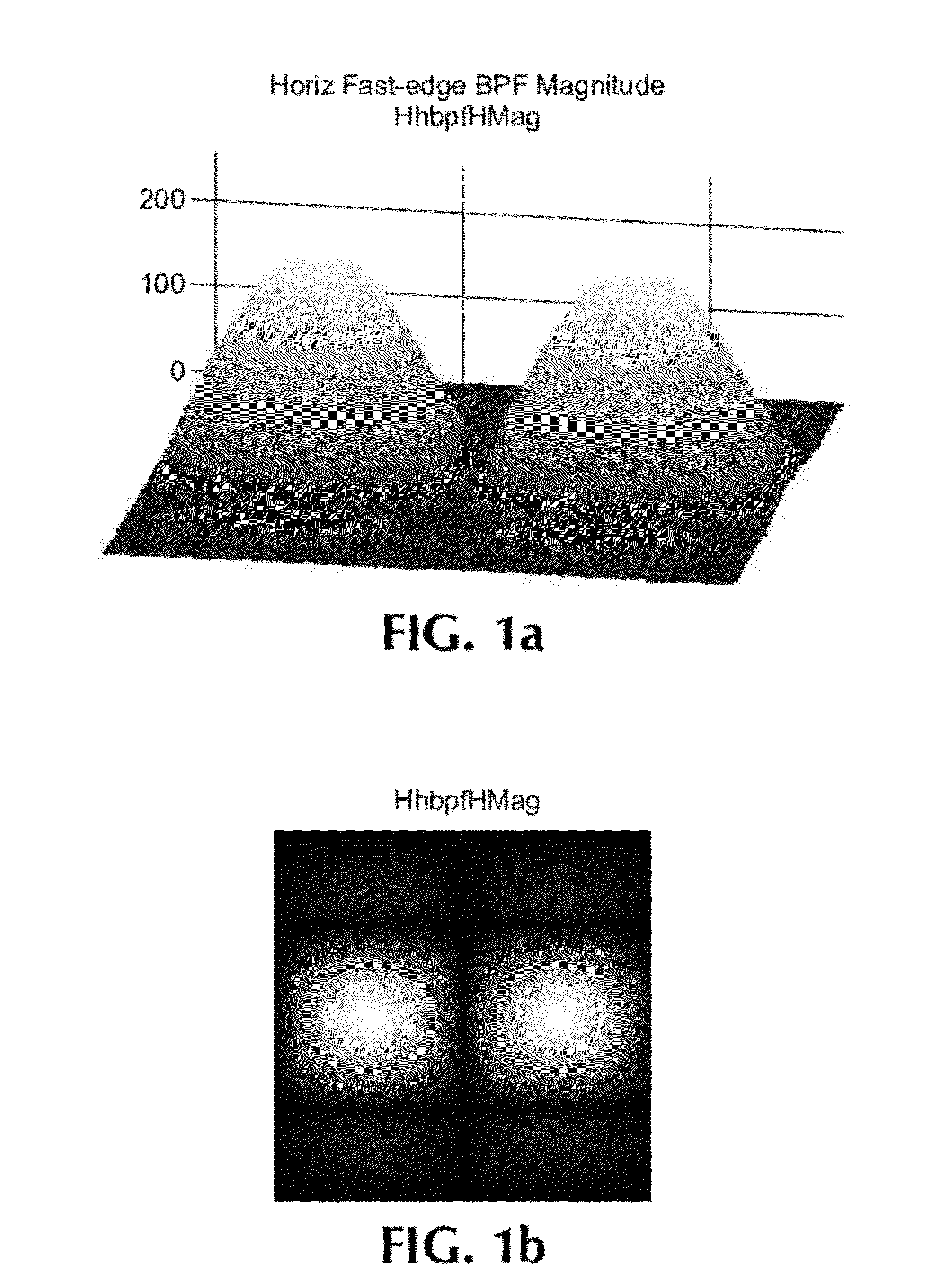Blur detection with local sharpness map
a local sharpness and blur detection technology, applied in the field of single-ended blur detection methods, can solve the problems of lack of sharpness or blurring, video image sequences that look less sharp than others, and up-converted sd video frame content does not provide the detail or sharpness to the full potential of hd resolution
- Summary
- Abstract
- Description
- Claims
- Application Information
AI Technical Summary
Benefits of technology
Problems solved by technology
Method used
Image
Examples
Embodiment Construction
[0017]The basic concept used in the present invention is that image sharpness is related to the transition-width or “speed” of edges of objects in the spatial directions which make up the subjective or perceived detail of the image. Blurred or soft images still contain edges defining the image objects, but with relatively longer edge transitions ranging over more pixels in one or more spatial directions. The longer edge transitions may be the result of poor focus, motion-blur during image capture, image compression or noise reduction filtering, or compression de-blocking filtering by HD CODECs. Detection of the edge-widths or edge-speeds of the image objects in a sequence of fields / frames is done in a way to create a normalized ratio of higher spatial frequencies (fast edges=sharp edges) to lower spatial frequencies (slow edges=blurred edges). The assumption is that, for a given image pixel resolution, an image that appears relatively soft or blurred has a lower ratio of high freque...
PUM
 Login to View More
Login to View More Abstract
Description
Claims
Application Information
 Login to View More
Login to View More - R&D
- Intellectual Property
- Life Sciences
- Materials
- Tech Scout
- Unparalleled Data Quality
- Higher Quality Content
- 60% Fewer Hallucinations
Browse by: Latest US Patents, China's latest patents, Technical Efficacy Thesaurus, Application Domain, Technology Topic, Popular Technical Reports.
© 2025 PatSnap. All rights reserved.Legal|Privacy policy|Modern Slavery Act Transparency Statement|Sitemap|About US| Contact US: help@patsnap.com



